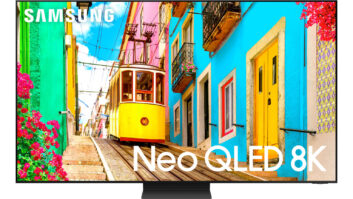Las Vegas — Verizon announced plans here to upgrade its fiber-optic FiOS TV service and revealed new details of its first-quarter launch of V Cast Mobile TV service for cellphones.
Verizon’s second-generation FiOS TV service will come with PC-networking capability and an enhanced media guide, which will enable an integrated search for specific video programs on broadcast TV channels, ondemand TV channels, Verizon’s Home Media DVR and networked PCs.
In other second-generation changes announced on the eve of International CES, FiOS channels will be grouped by genre for simpler access, and local traffic and weather updates will stream along the bottom of the TV screen while programs play. The service will also enable DVR programming from the Web browser of a remote PC and from a cellphone.
Many of the features will be available in the first quarter, with PC-networking, Internet radio and DVR programming by cellphone coming later in the year. The year-old FiOS TV service is available in 10 states.
In revealing more details about Verizon’s V Cast Mobile TV plans, Verizon Wireless chief marketing officer John Stratton said the service will launch in many major U.S. markets in the first quarter.” He also said Samsung and LG will support the launch with one phone apiece.
The service will launch with live content and other programming 24 hours per day from broadcast- and cable-TV networks, said Stratton. Content partners at launch will include CBS, Comedy Central, FOX, MTV, NBC News, NBC Entertainment and Nickelodeon. Verizon expects to add additional channels after the initial launch.
Although the company didn’t reveal details of subscription costs, channel count or the cost of the phones, Stratton did say the service would not simply “pass through” networks’ existing programming in real time but would offer television “programmed specifically for the mobile customer.”
Verizon Communications president Denny Strigl called the Mobile TV service “the first truly live broadcast mobile TV service.” Stratton elaborated by saying the service would offer “true broadcast-quality full motion video” with “virtually the same frames per second as home TV,” with TV-like audio and video synchronization, no waiting time to view, and channel changes that are “virtually instantaneous.” The bandwidth-hogging service also won’t degrade the quality of cellular-band voice and data services, he added, because it will use UHF channel 55 analog spectrum and broadcast towers operated by Qualcomm, whose MediaFLO technology enables the service. MediaFLO USA, a Qualcomm company, owns all the channel 55 spectrum in the U.S., negotiating to acquire content partners, and wholesale its video service to cellular carriers. MediaFLO is also working to clear analog stations from markets where they continue to operate but didn’t specify how many markets are free of channel 55 broadcasters.
Gina Lombardi, president of Qualcomm’s MediaFLO company, elaborated on Verizon’s comments, saying the Verizon service will launch with seven 24/7 channels from the announced content partners in 20 to 30 major metro areas. MediaFLO will continue to add new markets as it builds towers and facilities.
The channels will consist of a mix of simulcast programs broadcast simultaneously on MediaFLO’s network and the content partners’ broadcast or cable networks, Lombardi said. The Tonight Show, for example, will air at 11:30 p.m. ET on the MediaFLO network and on NBC, she said, but the program could be rebroadcast over MediaFLO sometime the next day. The ads broadcast by the cable or broadcast network will be retransmitted by MediaFLO.
The seven channels that MediaFLO will initially launch will be the basic package available to all cellular cariers, who can then ppick and choose additional channels to offer as they become available, Lombardi said.
Qualcomm completed MediaFLO trials with BSkyB in the United Kingdom and found that 20 channels of QVGA video and stereo audio could be broadcast over a single 5MHz spectrum allocation, with video-channel switching times at an average 2.1 seconds and the acquisition of a channel guide at an average of two seconds. The company has also said that MediaFLO battery life is equivalent to cellular talktime battery life.
The MediaFLO-equipped LG and Samsung phones will feature dedicated TV keys, landscape-mode displays, parental controls, program guides, retractable TV antenna, ability to stream video over cellular airwaves and ability to download music over the air to the handset. They also let users receive phone calls and text messages while a TV program is streamed.
LG’s phone, the 4-ounce VX9400, will be a dual-band 800/1900MHz CDMA 1x EV-DO phone with 2.2-inch display screen that can be rotated into landscape mode for TV viewing. Samsung’s 3.7-ounce SCH-u620 features 2-inch QVGA screen and file viewer.













